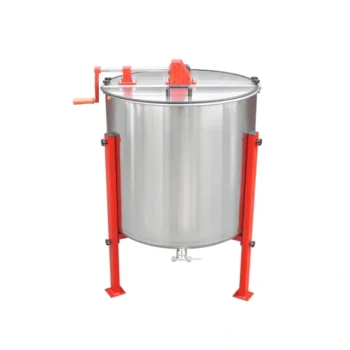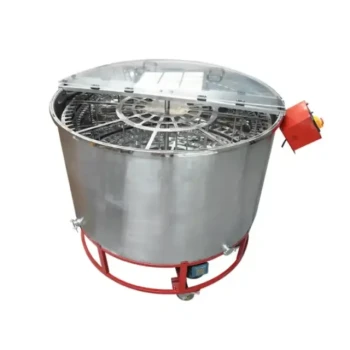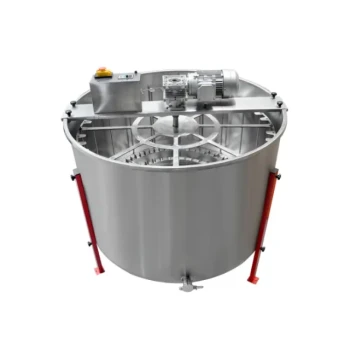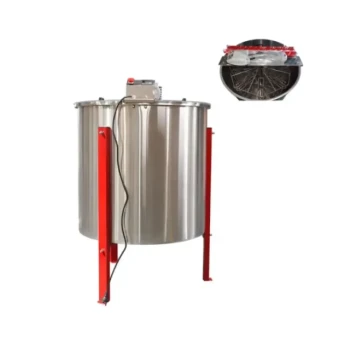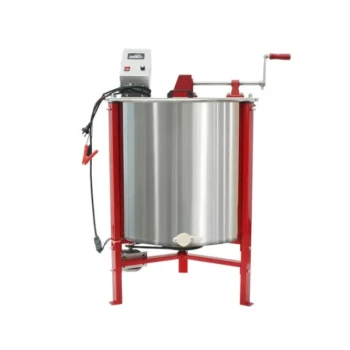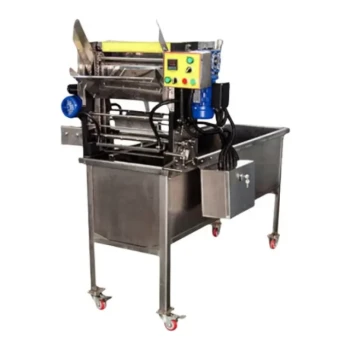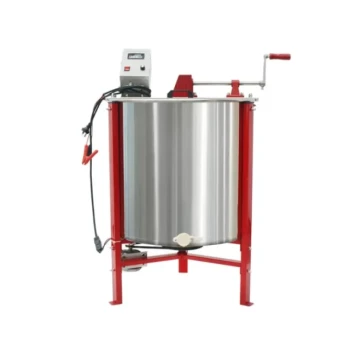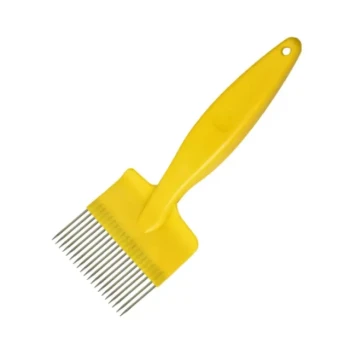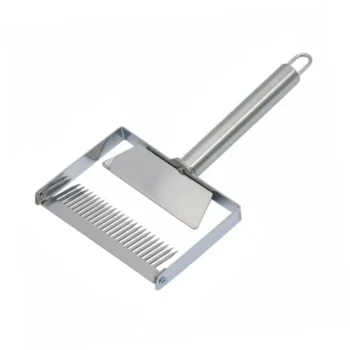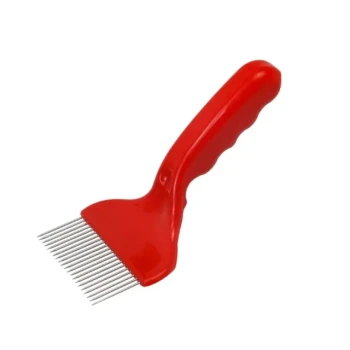At its core, a honey extractor is a machine that uses centrifugal force to spin honey out of the comb. This process allows beekeepers to harvest honey efficiently without destroying the intricate beeswax structure the bees worked so hard to build. The intact combs can then be returned to the hive for the bees to refill immediately.
The decision to use a honey extractor is not just about harvesting honey. It is a strategic choice that prioritizes the long-term health and productivity of your bees while dramatically improving the efficiency of your own labor.
The Core Principle: Preserving the Comb
The single most important benefit of using a honey extractor is its ability to preserve the drawn-out beeswax comb. This has profound implications for the colony.
Why Reusing Comb is Crucial
Bees expend an enormous amount of energy to produce wax and construct comb. By returning the empty, intact combs to the hive, you give the colony a massive head start.
Instead of spending time and resources rebuilding, they can immediately begin storing new nectar and making more honey.
How an Extractor Protects the Comb
The extractor spins frames at high speed. This generates centrifugal force, which flings the liquid honey out of the wax cells and onto the inner wall of the extractor drum.
The delicate wax structure remains unharmed, ready to be placed back in the hive.
The Impact on Honey Yield
When you preserve the comb, you get a higher yield of clean honey. Alternative methods like "crush and strain" inevitably leave a significant amount of honey trapped in the destroyed wax, which is then lost.
Extraction provides a purer product with less filtering required.
A Revolution in Beekeeping Efficiency
Beyond benefiting the bees, an extractor fundamentally changes the experience for the beekeeper. It streamlines the harvest, saves time, and reduces physical effort.
Manual vs. Electric Extractors
Manual extractors are powered by a hand crank, making them a good entry point for hobbyists. Electric models use a motor, offering push-button convenience and greater speed.
Electric extractors are highly efficient and significantly reduce the physical labor required, making them ideal for anyone with more than a couple of hives.
Saving Time and Labor
Compared to the slow, messy process of crushing and straining, an extractor is incredibly fast. An electric model can process multiple frames in just a few minutes.
This efficiency allows beekeepers to harvest large quantities of honey in a fraction of the time.
Scaling Your Operation
Extractors are designed for scalability. Small models hold just two to four frames, perfect for a backyard beekeeper.
Commercial operations use large, industrial units that can extract honey from over 100 frames at once, demonstrating the equipment's value at every level.
Understanding the Trade-offs
While highly beneficial, an extractor is a significant piece of equipment that comes with its own considerations.
The Initial Investment
A honey extractor represents a notable financial cost, especially for new beekeepers. This is the primary barrier for many hobbyists.
The Cleanup Process
Thorough cleaning after each use is non-negotiable. Any remaining honey can attract pests, and improperly cleaned equipment can spread bee diseases between your hives.
Storage Requirements
Extractors are bulky items. You will need a clean, dry, and pest-free space to store the machine when it is not in use during the beekeeping season.
Making the Right Choice for Your Apiary
Choosing whether to invest in an extractor depends entirely on your goals as a beekeeper.
- If your primary focus is hive health and long-term productivity: An extractor is invaluable because allowing bees to reuse drawn comb is the single biggest advantage you can give them.
- If your primary focus is saving time and physical effort: An electric extractor is the superior choice, especially if you manage more than two hives.
- If your primary focus is minimizing initial costs: A manual extractor or joining a local beekeeping association to rent or borrow equipment is the most practical starting point.
Ultimately, using an extractor empowers you to manage your apiary as a sustainable partnership between you and your bees.
Summary Table:
| Benefit | Key Takeaway |
|---|---|
| Bee Health | Preserves wax comb, saving bees energy and boosting productivity. |
| Harvest Efficiency | Extracts honey quickly with minimal labor compared to crush & strain. |
| Honey Yield | Maximizes yield by cleanly extracting honey, leaving wax intact. |
| Scalability | Available in manual (hobbyist) and electric (commercial) models. |
Ready to upgrade your honey harvest?
As a leading supplier to commercial apiaries and distributors, HONESTBEE provides the durable, high-capacity honey extractors and equipment you need to operate efficiently at scale. Our wholesale-focused solutions help you protect your bee colonies, maximize your yield, and grow your business.
Contact HONESTBEE today to discuss your equipment needs and wholesale pricing.
Visual Guide
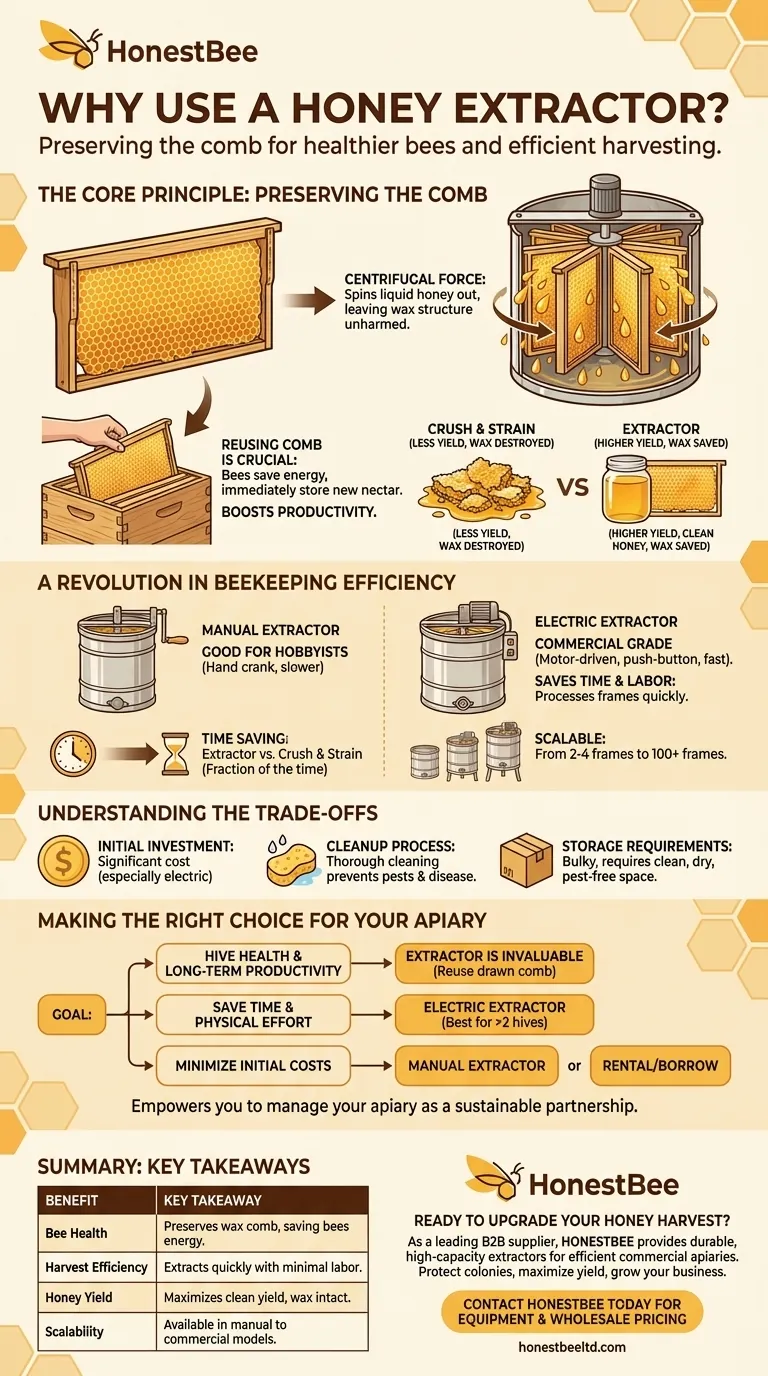
Related Products
- 2 Frame Stainless Steel Manual Honey Spinner Extractor for Beekeeping
- 6 Frame Manual Stainless Steel Honey Extractor Beekeeping Equipment
- HONESTBEE 72 Frame Industrial Electric Honey Extractor for Beekeeping
- electric honey extractor honey centrifuge 3 frame honey extractor stainless steel honey frame extractor
- Plastic Hand Crank 2 Frame Honey Extractor Low Price
People Also Ask
- What are the advantages of tangential honey extractors? Gentle, Affordable Honey Extraction for Your Apiary
- How can a pressure washer be used to clean a honey extractor? A Guide to Safe and Efficient Cleaning
- What are some expert tips for cleaning a honey extractor? Protect Your Harvest & Equipment
- How do beekeepers harvest honey from the honey super? A Step-by-Step Guide to Efficient Extraction
- How often should a honey extractor be cleaned if used multiple times a year? Optimize Your Harvest Workflow

